
views
- Remove the leaves from your flower stems and tie them together with string. Hang the flowers upside-down for 3–4 weeks until they’re dried out.
- Preserve flowers that were cut right before they were in peak bloom so they have the most vibrant color.
- Spray your flowers with unscented hairspray and keep them out of direct sunlight to prevent fading or crumbling.
Flower Preservation Techniques

Hang your flowers to air-dry them. Air-drying your flowers is the simplest way to preserve them since you don’t need any special equipment besides some string. Try air-drying flowers that have sturdy stems, like baby’s breath, money plant, statice, and strawflowers. Blue and yellow flowers retain their colors the best, while pink blooms may fade slightly. First, remove any foliage from the stems that you don’t want to dry, and cut them to the length you want. Next, tie the flower stems together with string. If you’re drying large flowers like peonies or hydrangeas, leave them separate rather than bundling them together. Hang the flowers upside-down in a cool, dark place with good air circulation, like a basement, closet, or pantry for 3-4 weeks.
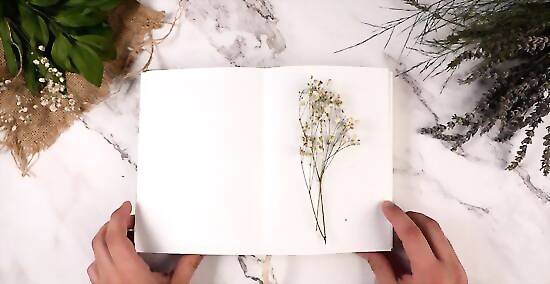
Press your flowers inside of a book. Using a heavy book to save flowers squeezes all the moisture out of them so they maintain their color. Because you’ll have to close the book to press your flowers, this method works best for flower petals or flat-faced blooms, like violets, daisies, pansies, and zinnias. Cut your flower’s stem to the desired length so it’s short enough to fit the whole flower inside the book. Sandwich the flowers between 2 sheets of newspaper, tissues, cardboard, or coffee filters. Avoid paper towels since the patterns could imprint on the flowers. Open an old heavy book, like a dictionary or encyclopedia, and place your flowers and paper between the pages. Close the book and place 2–3 more books on top of it. Leave your flowers for 2–4 weeks to fully press and dry them. If the paper covering the flowers becomes saturated before they’re done drying, replace the sheets.
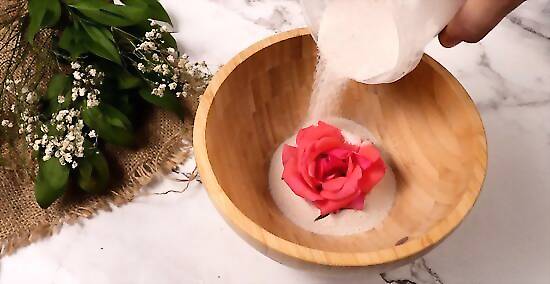
Dry your flowers under silica gel or fine sand. Silica gel is a small granular material that easily absorbs water from your flowers. This process works best for flowers that have large blooms or multiple petals, like violets, roses, tulips, dahlias, and mums, since drying them any other way could cause the blooms to shrivel. Fill the bottom of a container with 1 in (2.5 cm) of silica gel or fine sand. Cut the flower stem so it’s ⁄2 inch (1.3 cm) long and stick it in the middle of the silica gel or sand. If the flower is flat, put it face-down. If the flower is more round, keep it face-up. Pour more silica gel or sand around the perimeter of the container, and tap the edges lightly so it fills in around the flower. Add more gel or sand until it completely covers the flower petals by about 1 in (2.5 cm). Leave your flower buried in the silica gel for about 1 week before carefully removing it. If you’re using sand, leave the flower for 2–3 weeks instead.

Heat your flowers in the microwave. If you’re in a rush to preserve your flowers, your microwave can quickly draw out all the moisture from your flowers. Since the blooms will flatten after you microwave them, this works best for individual petals or flat-faced flowers like daisies. Sandwich your flowers flat between non-patterned paper towels or coffee filters. Place your flowers in your microwave. Set a heavy, microwave-safe dish on top of your flowers to weigh them down. Run your microwave on low or the defrost setting for 1 minute. Check if your flower feels dry to the touch. If not, run your microwave in 30-second increments until they’re done, which should take 1–4 minutes total.
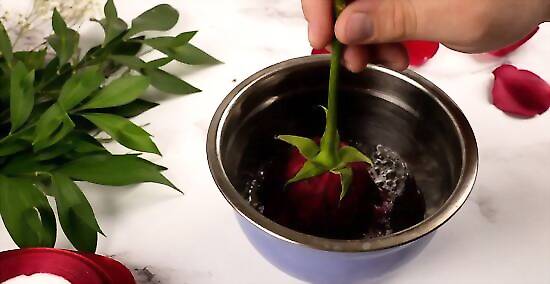
Dip your flowers in paraffin wax. If you want fresh blooms to keep looking great a few months after cutting them, dipping flowers in wax is the perfect temporary solution. Wax works great for flowers that die out within a few days of cutting, such as camellias. It may take a few tries to get a smooth finish on the wax, but your flowers will look amazing when you’re finished. Heat 5 pounds (2.3 kg) of wax and 1 ⁄2 US pt (710 ml) of mineral oil in a large wok until it’s 138 °F (59 °C). Drag the fresh-cut flower through the wax in a single, smooth motion. Plunge the flower into ice water and stand it upright to dry completely.
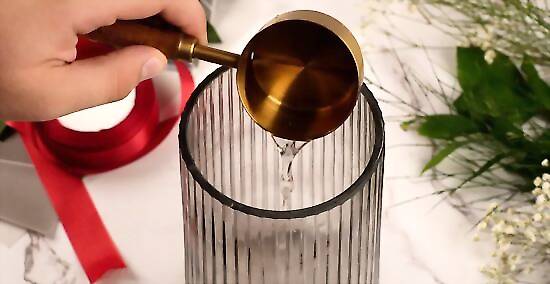
Soak your flowers in a water and glycerin solution. When you soak flowers in glycerin, the solution gets absorbed into the stems so they stay flexible. That way, you’re able to bend the stems or branches if you want to make a flower wreath or garland. Glycerin works best for flowers with mature leaves, like magnolia, mistletoe, boxwood, camellia, and rhododendron. Mash the ends of the stems with a hammer. Place the stems in a mixture that’s 1 part glycerin and 2 parts water. Leave your flowers in the glycerin solution for 2–3 weeks, or until all the foliage turns golden-brown. Refill the solution if your flowers absorb it all.
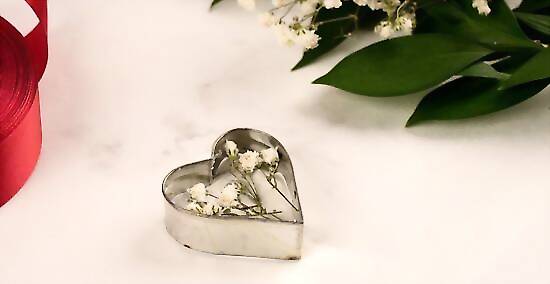
Seal dried flowers in an epoxy resin mold. Epoxy resin dries clear and is the most permanent way to preserve your flowers. Any flower looks great when you use epoxy resin, but they need to be dried out beforehand. Use any of the other methods to dry out your flowers before putting them in epoxy. Wear a face mask and gloves while you’re working. Combine the epoxy resin in a small cup with a stir stick or toothpick, following the mixing directions on the package. Pour ⁄2 in (1.3 cm) of resin into a mold that’s the shape you want. Arrange the dried flowers in the resin. If you'd like, add some additional flourishes like beads and sequins to the resin. Pour another layer of resin to completely cover the flower and fill up the mold. Pop any air bubbles in the resin and between petals using a toothpick. Let the resin cure for 24–48 hours. After that, the resin will feel hard and will easily pop out of the mold.
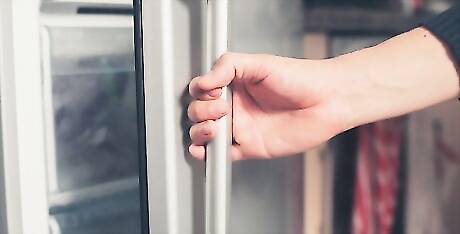
Get your flowers professionally freeze-dried. When you freeze-dry flowers, they sit in a refrigerated chamber and drop the temperature just below freezing. After that, all the air is removed from the chamber and the moisture inside the flowers turns into a gas. When your flowers are warmed back up to room temp, they’ll be dried and ready to display. Since the process is difficult to do on your own and requires expensive equipment, contact a local florist to see if they’re able to freeze-dry the blooms for you.
Best Times to Preserve Flowers
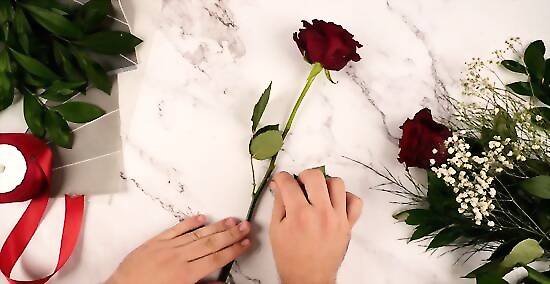
Cut flowers you want to preserve right before they fully open. If you are cutting fresh flowers to dry them, wait until just before they’re in peak bloom. That way, they’ll dry out better and hold their bright, vibrant colors instead of fading. Since flowers bloom at different times throughout the year, harvest and dry multiple flowers throughout the growing season to have a variety of blooms to decorate with.

Preserve pre-cut flowers or a bouquet within 4 days. If you’re saving a bouquet, try to start the preservation process immediately to help retain the flowers’ shapes and colors. If you can’t start preserving your flowers right away, keep them in water and inside your fridge for a few days until you’re able to.
How do I make preserved flowers last?
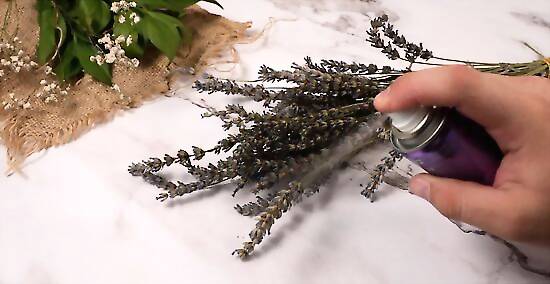
Spray dried flowers with hairspray. After drying out your flowers, spray the flowers with any unscented hairspray you have at home. The spray will help the blooms retain their shape and prevent them from dropping petals.
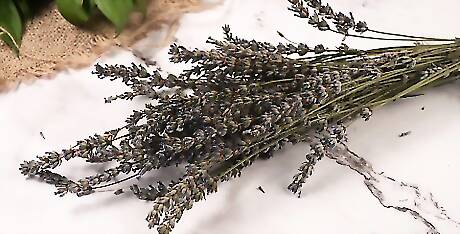
Keep preserved flowers out of direct sunlight to prevent fading. Sunlight causes dried flowers to potentially crumble and lose their color. To keep your flowers or bouquet looking bright and beautiful, store your flowers in a shady spot that’s out of the sun. Avoid keeping dried flowers in humid areas of your home as well since moisture could reabsorb into the foliage.
Decorating with Preserved Flowers

Create a dried bouquet with a decorative vase. Choose your favorite vase and arrange your flowers into a bouquet. Try combining flowers and foliage that have complementary colors, or use a variety of blooms with different textures and colors to make your bouquet really pop. Keep your dried bouquet at the center of your dining room table or on a living room coffee table. Put floral netting inside of the vase to help keep the stems separated and easier to move around. Since you dried the flowers, you don’t have to worry about watering your bouquet or the blooms wilting.

Frame pressed flowers to create simple displays. If you’d like to add a classic flourish to your living room, place any flowers that you dried and flattened inside of your favorite picture frame. Arrange multiple flowers to make an eye-catching design before securing the back to the frames. Place the framed flowers on a shelf, display them on your mantle, or hang them on the wall.
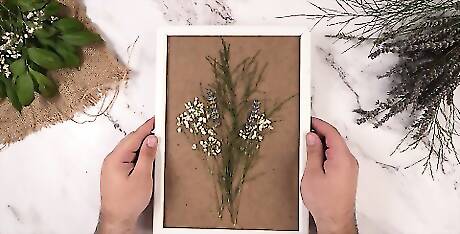
Hang resin-preserved flowers on the wall or wear them as jewelry. If you choose to preserve your flowers in resin, you have a plethora of options when it comes to decorating with them. Leave the flowers in resin on a desk to use as a paperweight, or try displaying them proudly on a wall shelf or hanging them on your wall with a nail. If you want to show off your preserved flowers, then use the resin as a charm on a necklace or pair of earrings for the world to see.











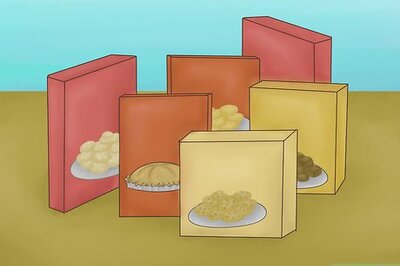





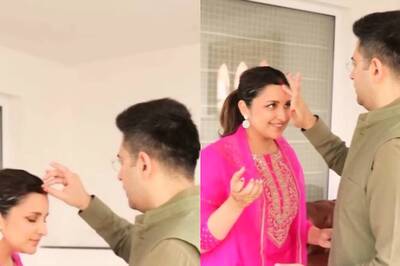
Comments
0 comment